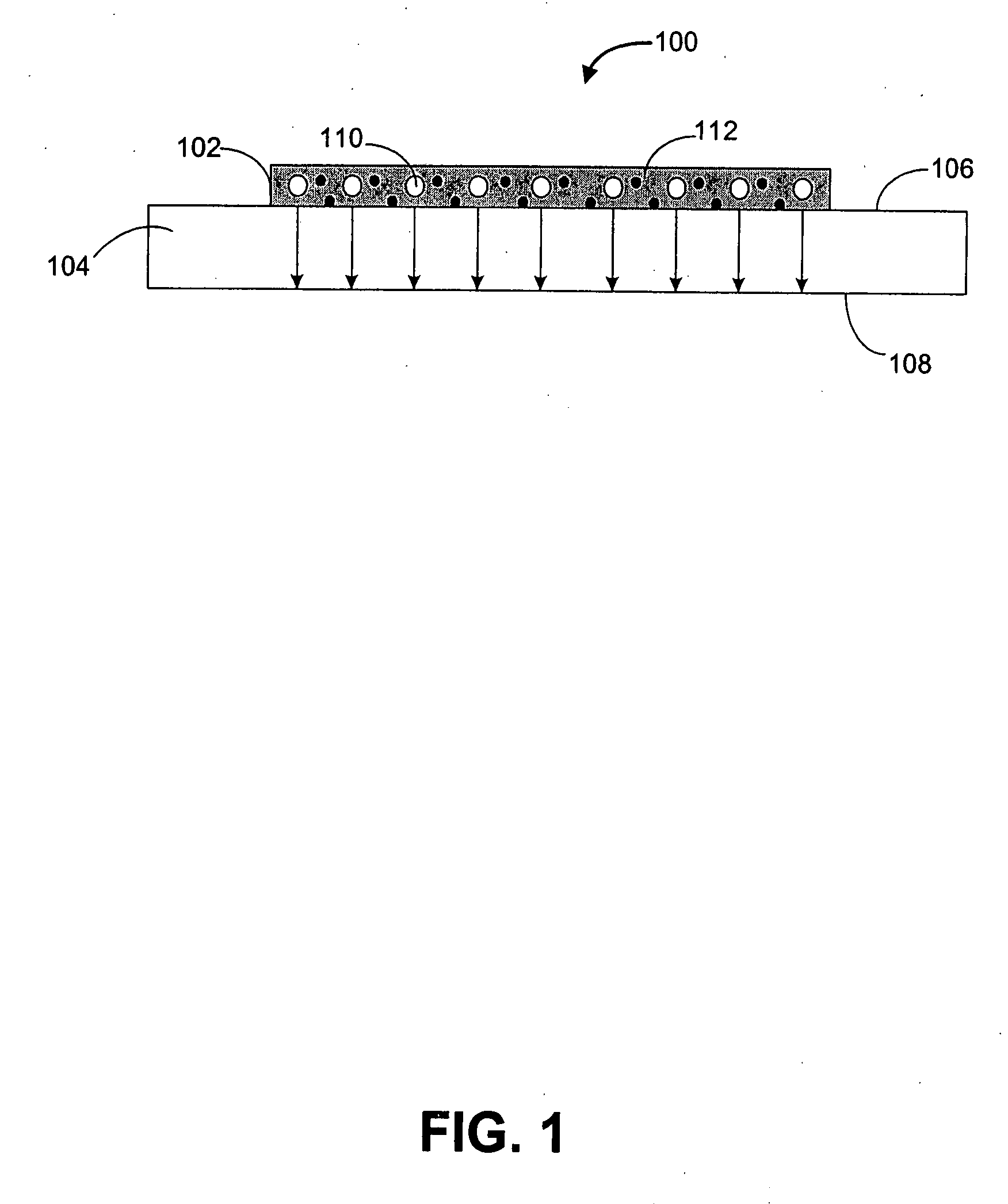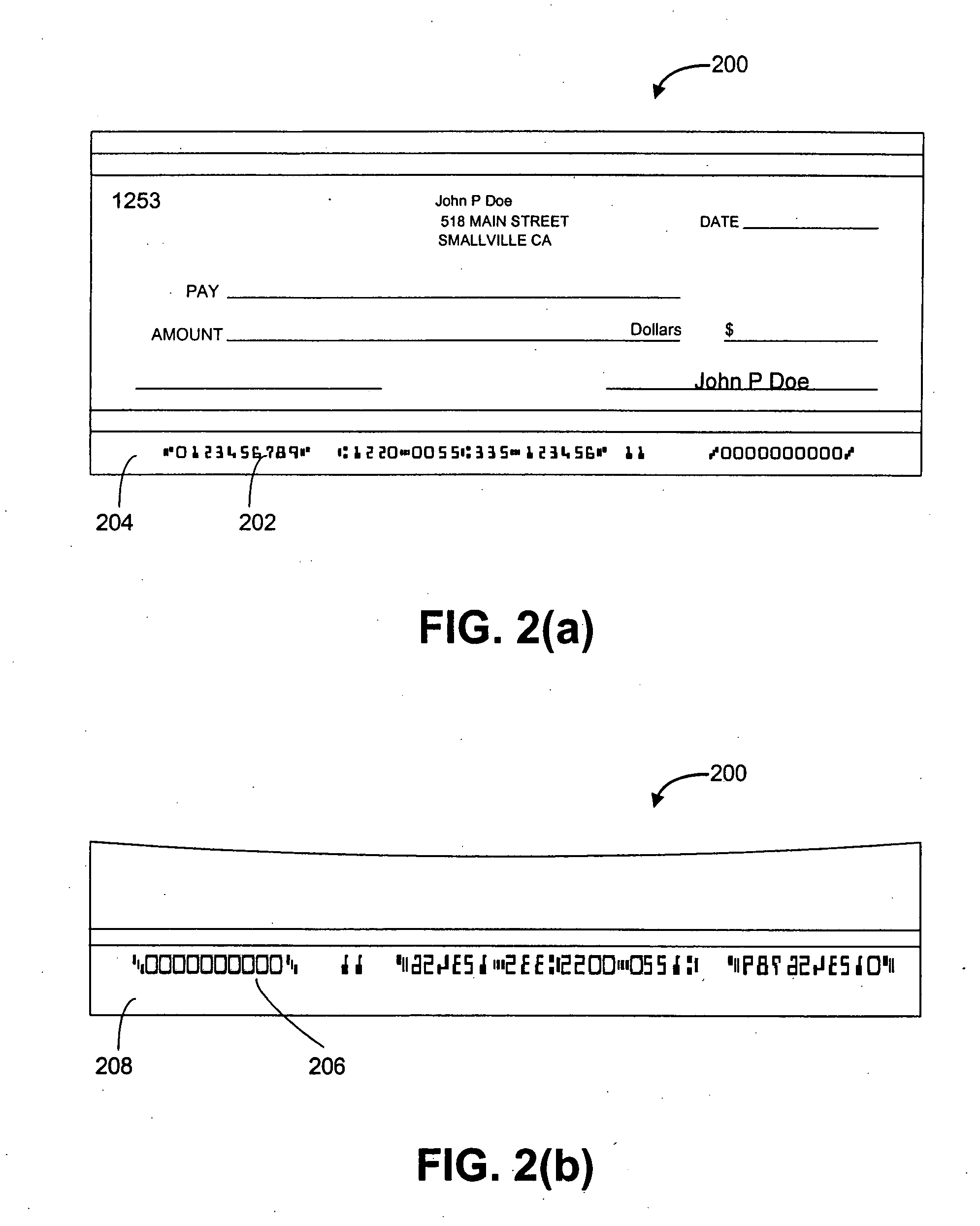Secure imaging toner and methods of forming and using the same
- Summary
- Abstract
- Description
- Claims
- Application Information
AI Technical Summary
Benefits of technology
Problems solved by technology
Method used
Image
Examples
example i
[0040] The following example illustrates a preparation of an 8-micron security toner for the use in electrophotographic printing. A toner composition containing the specific composition tabulated below is initially thoroughly pre-mixed and then melt mixed in a roll mill. The resulting polymer mix is cooled and then pulverized by a Bantam pre-grinder (by Hosokawa Micron Powder System). The larger ground particles are converted to toner by air attrition and classified to a particle size with a median volume (measured on a Coulter Multisizer) of approximately 8 microns. The surface of the toner is then treated with about 0.5% dimethyldichlorosilane treated silica (commercially available through Nippon Aerosil Co. as Aerosil R976) by dry mixing in a Henschel mixer.
ExemplarySpecificCompositionsCompositionComponentChemicalManufacturer(weight parts)(weight parts)ThermoplasticLinearImage Polymers-20-5046Binder ResinPolyesterXPE-1965Charge-AnilineOrient Chemical0-31ControllingCompany-Bontr...
example ii
[0042] The following example illustrates a preparation of an 8-micron security toner including a migration agent for use in electrophotographic printing.
ExemplarySpecificCompositionsCompositionComponentChemicalManufacturer(weight parts)(weight parts)ThermoplasticLinearImage Polymers-20-5041Binder ResinPolyesterXPE-1965Charge-AnilineOrient Chemical0-31ControllingCompany-BontronAgentNO1ColorantIron OxideRockwood10-5042PigmentsMapico BlackReleasing AgentPolypropyleneSanyo Chemical 0-155Industries-Viscol330PDyeAzo organicKeystone Aniline 1-206DyeCorp. KeyplastRedOilMagiesol MSO 1-104Oil
[0043] The toner composition of Example II is formed in same way as the toner of Example I, except a migration agent is added to the formula. The prepared mono component toner was again tested using a mono component printer such as a Hewlett Packard 5Si. The resulting image contained adequate density, adequate resolution, no noticeable background, and initially no migration of the visible red dye. The a...
example iii
[0044] The following example illustrates a preparation of a 10-micron security Magnetic Ink Character Recognition (MICR) toner, including the specific weight composition tabulated below, for use in electrophotographic printing. A toner composition containing the specific composition is initially thoroughly mixed and then melt mixed in a roll mill. The resulting polymer mix is cooled and then pulverized by a Bantam pre-grinder. The larger ground particles are converted to toner by air attrition and classified to a particle size with a median volume (measured on a Coulter Multisizer) of approximately 10-microns. The surface of the toner is then treated with about 1.0% Hexamethyldisilazane treated silica (commercially available through Nippon Aerosil Co. as Aerosil R8200) by dry mixing in a Henschel mixer.
ExemplarySpecificCompositionCompositionComponentChemicalManufacturer(weight parts)(weight parts)ThermoplasticLinearImage Polymers20-5046Binder ResinPolyesterXPE-1965Charge-AnilineOr...
PUM
| Property | Measurement | Unit |
|---|---|---|
| Size | aaaaa | aaaaa |
| Fraction | aaaaa | aaaaa |
| Fraction | aaaaa | aaaaa |
Abstract
Description
Claims
Application Information
 Login to View More
Login to View More - R&D
- Intellectual Property
- Life Sciences
- Materials
- Tech Scout
- Unparalleled Data Quality
- Higher Quality Content
- 60% Fewer Hallucinations
Browse by: Latest US Patents, China's latest patents, Technical Efficacy Thesaurus, Application Domain, Technology Topic, Popular Technical Reports.
© 2025 PatSnap. All rights reserved.Legal|Privacy policy|Modern Slavery Act Transparency Statement|Sitemap|About US| Contact US: help@patsnap.com



